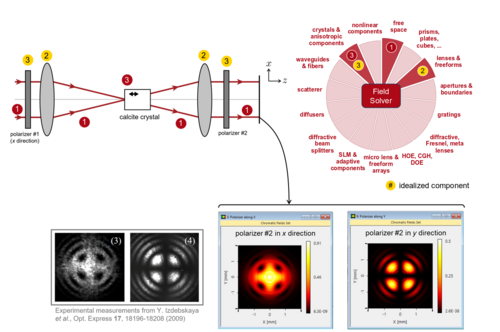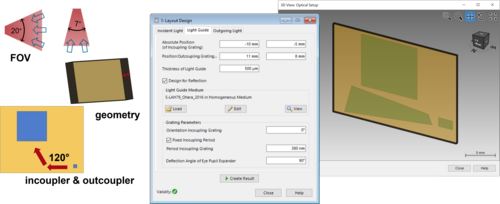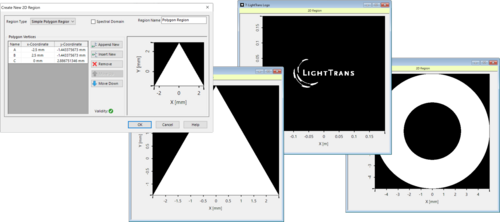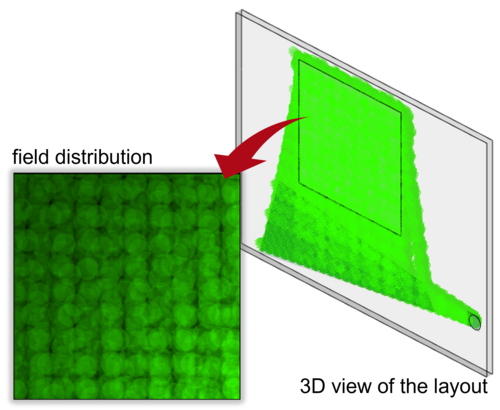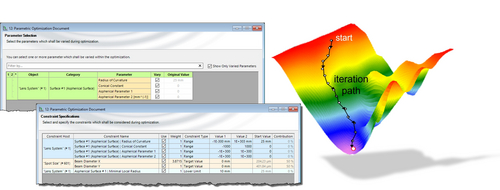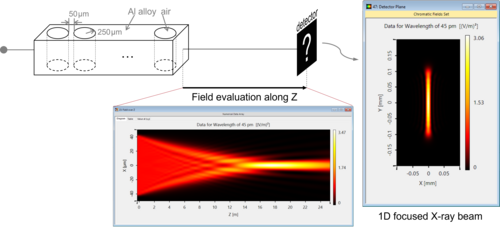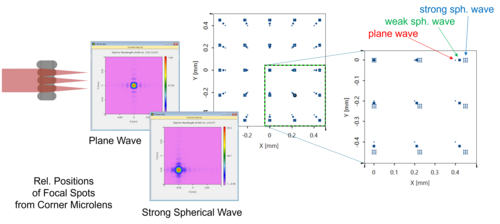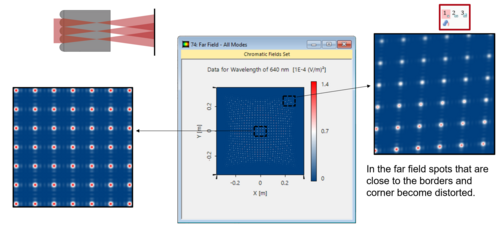What’s new in our Optical Modeling and Design Software?
Save Your Seat for Our New Meetup and Online Training in December!
LightTrans User Meetup
Prepare for 2022 – Ask Us Your Open Questions
01 December 2021 | 10:00 – 17:45 (CET)
Online Training
Modeling Anisotropy and Crystals in VirtualLab Fusion
07 – 08 December 2021 | 08:30 – 12:00 (CET)
Design Tools for Light Guide Layouts with 1D-1D EPE
The design of light-guiding devices for augmented- and mixed-reality applications is famously challenging, due to the total mix-up of angular and spectral modes and a vast number of free parameters in the system, what makes a “brute-force” approach to parametric optimization pretty much an impossibility. The fast physical optics modeling and design software VirtualLab Fusion with its Light Guide Toolbox Gold Edition puts at your disposal several systematic design tools that help the optical engineer tackle the design process step by step and in a more controlled manner. These systematic design tools cover the layout of the device as well as the grating parameters in the coupling and EPE regions.
Here, we focus on two layout-related tools: k-Layout Visualization and Layout Design, applicable for devices with a separable 1D-1D pupil expansion and 1D-periodic grating structures, like Hololens 1. Take a look at the use cases below to learn more about their exciting potential!
Read moreIn- and Outcoupling Regions for Light Guides
A major part in the design of light guides for augmented- and mixed-reality applications are the couplers, in many cases realized as grating regions on the surface of the light guide. VirtualLab Fusion provides an extremely flexible approach for region configuration. When used to define grating regions on light guides, there is yet another level of flexibility, in the form of which orders are to be traced and which method applied to model the grating. For an initial investigation of the system, or for unknown structures, a functional grating model is available. For a fully fledged simulation of the grating we offer the rigorous Fourier Modal Method (FMM/RCWA). The cherry on the cake is a lookup table concept that stores the Rayleigh matrices and uses them in subsequent runs, thus increasing simulation speed.
Go through the use cases below to learn more about these capabilities:
Read moreSimulation of Light Guides for AR & MR Devices
With the advent of new technologies in the area of augmented and mixed reality (AR & MR) optical light guides have grown in popularity. To model and design such structures, VirtualLab Fusion puts at your disposal its powerful Light Guide Toolbox, which allows for the flexible definition of the overall structure and distinct areas for in- and outcouplers. Together with its non-sequential simulation engine, which incorporates all crucial physical effects like polarization, diffraction from apertures and coherence, this provides powerful tools that support the optical engineer in their task to investigate and design a light guide device for AR & MR.
Read moreParametric Optimization
Parametric optimization is an indispensable and important step in optical design. It can help refine and improve the system to ensure that the specifications of the task are fulfilled, and that the desired performance is achieved. The fast physical optics modeling and design software VirtualLab Fusion includes an in-built parametric optimization feature, which of course works on the basis of the different simulation engines available (both ray and field tracing), as required by the design task. The selection of off-the-shelf detectors and analyzers that come with the software provide many of the most common merit functions, with additional customization possible through programming.
Read moreFocusing Systems for X-Rays
Use of high-energy photons (“X-rays”) has become a common feature in many medical and synchrotron applications. Unlike light in the visible spectrum, X-rays only interact weakly with most matter, which makes the design of focusing elements more challenging than for other sections of the wavelength spectrum. Below we demonstrate two approaches to tackle this task, employing compound lenses and elliptical mirrors under grazing incidence. A fast physical optics simulation of these systems with the modeling and design software VirtualLab Fusion allows us to investigate their performance on the basis of focal length and measured spot size.
Read moreShack-Hartmann Wavefront Sensor
The Shack-Hartmann sensor is a well-known detector that is used to gather information about the phase of impinging light. Due to phase information not being directly accessible (in an experimental context) an array of microlenses is used to generate a pattern of foci. By analyzing this pattern, e.g. measuring lateral shifts of the foci, details of the impinging wavefront at each position can be retrieved. With the fast physical optics modeling and design software VirtualLab Fusion not only is it possible to obtain the original phase information directly – one of the perks of simulation technology – but also to simulate the propagation of the light through the entire Shack-Hartmann optical device. Below you can see some examples of the physical-optics simulation of Shack-Hartmann-like systems.
Read morePropagation through Microlens Arrays
With the advent of modern technologies specialized optical components like microlens arrays (MLAs) get more and more attention. Especially in the field of optical projection systems, material processing units and optical diffusers microlens arrays have seen common usage. In VirtualLab Fusion such systems can be set up and simulated using a new MLA component introduced in the latest release, allowing a thorough investigation of the transmitted field in the near field behind the microlens component as well as in the far field and focal region.
Read more



